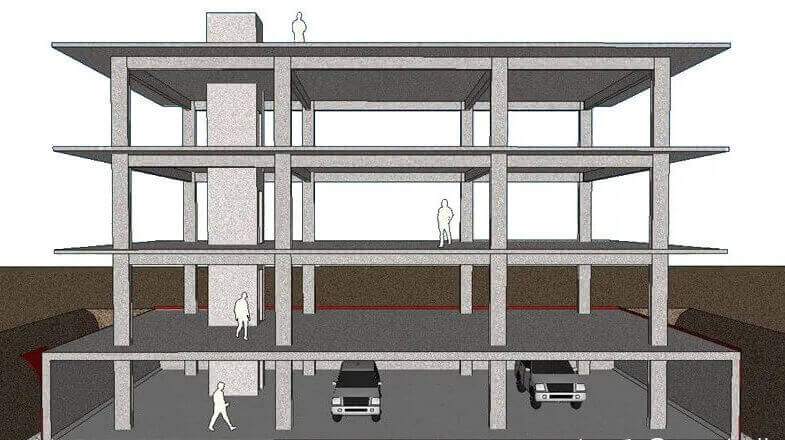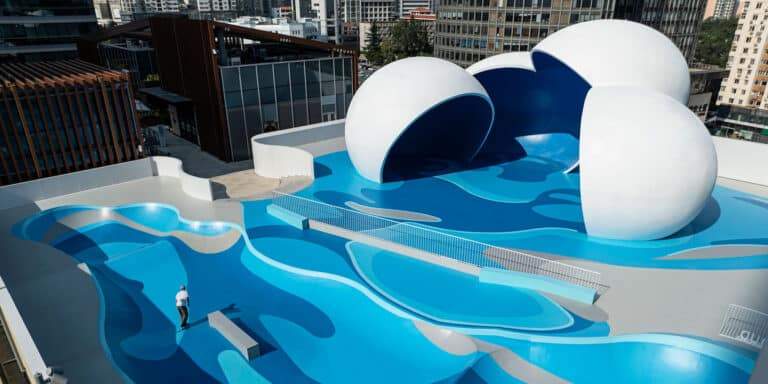Modern Construction: Advanced Techniques and Sustainable Quality
In light of the rapid advancements in the construction sector, modern techniques such as cold-formed steel and reinforced concrete, along with functional designs, have become fundamental pillars of contemporary building projects. This article highlights the most prominent construction techniques used today, focusing on their advantages, applications, and the standards that determine their quality. It also addresses the role of regulatory bodies in ensuring compliance with technical standards, along with tips for selecting the right materials for each project.

1. Cold-Formed Steel Construction: Speed and Durability
Cold-formed steel (CFS) is considered an ideal solution for fast construction without compromising quality. These elements are made from cold-rolled steel sheets, giving them high strength with a lightweight compared to traditional steel. Applications include external extensions, suspended ceilings, and non-load-bearing walls.
Advantages of Cold-Formed Steel:
- Fast Installation : Reduces execution time by up to 40% compared to traditional methods.
- Long Lifespan : Resistant to corrosion and weather fluctuations, especially when protective coatings are applied.
- Design Flexibility : Allows for the easy implementation of complex geometric shapes.
| Feature | Cold-Formed Steel | Traditional Steel |
|---|---|---|
| Weight | Lightweight | Heavy |
| Installation Speed | High | Moderate |
| Cost | Low | High |
Quotation:
“Cold-formed steel is recommended for projects requiring rapid execution while ensuring high durability, such as industrial and commercial facilities.”
Source: Saudi Standards, Metrology, and Quality Organization (SASO).

2. Reinforced Concrete: Strength and Reliability
Reinforced concrete is one of the most widely used materials in construction worldwide, combining the durability of concrete with the strength of steel reinforcement. It is used in columns, ceilings, and floors, particularly in multi-story buildings.
Quality Standards:
- The water-to-cement ratio should not exceed 0.5 to ensure strength.
- Use appropriately sized steel reinforcement bars as per the structural engineer’s design.
- Periodic testing of concrete through compression and cracking tests.
3. Aluminum and Glass Facades: Aesthetics and Efficiency
Aluminum and glass facades enhance the modern appearance of buildings while improving energy efficiency by reducing heat transfer. These facades are sometimes made from recycled materials, supporting sustainability efforts.
Applications:
- Commercial buildings (offices, hotels).
- Luxury villas with open-plan designs.

4. Electrical and Plumbing Systems: Compliance with Standards
Electrical and plumbing works require approval from regulatory authorities such as:
- DEWA : Dubai Electricity and Water Authority.
- FEWA : Federal Electricity and Water Authority.
- SEWA : Sharjah Electricity and Water Authority.
Tips for Ensuring Quality:
- Use pipes approved by these authorities.
- Avoid random installations that may cause future leaks.
5. Interior Design: Functionality and Simplicity
Modern interior design focuses on achieving a balance between aesthetics and functionality, using eco-friendly materials. Current trends include:
- Neutral colors that reflect nature.
- Natural lighting through large windows.

ArchUp’s Opinion: Critical Analysis
Advantages:
- Modern construction techniques help reduce waste and increase efficiency, especially in large-scale projects.
- Glass facades support sustainability trends by improving building insulation.
Disadvantages:
- The cost of modern materials (such as tempered glass) may be higher than traditional options.
- Using cold-formed steel requires skilled labor, which can be a challenge in some regions.
Recommendations:
- Train workers in new technologies to ensure proper execution.
- Conduct feasibility studies before selecting materials to avoid excessive costs.

Frequently Asked Questions (FAQ)
1. What is the difference between cold-formed steel and traditional steel?
Cold-formed steel is made from cold-rolled sheets, lighter in weight, and faster to install, while traditional steel (hot-rolled) is heavier and used in load-bearing parts of a building.
2. Are glass facades safe?
Yes, if tempered and treated glass is used according to standard specifications.
3. How long does it take to build a house using cold-formed steel?
It typically takes 3-6 months depending on the project size, compared to 8-12 months using traditional methods.
Summary Table
| Element | Main Advantage | Typical Application |
|---|---|---|
| Cold-Formed Steel | Fast Execution | External Extensions |
| Reinforced Concrete | High Durability | Columns and Ceilings |
| Aluminum Facades | Modern Aesthetics | Commercial Buildings |
| Electrical Systems | Regulatory Compliance | All Types of Buildings |

Sources:
- Saudi Standards, Metrology, and Quality Organization (SASO).
- Dubai Electricity and Water Authority (DEWA).







